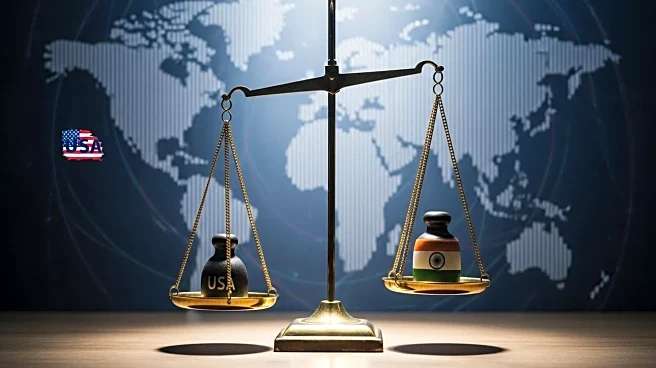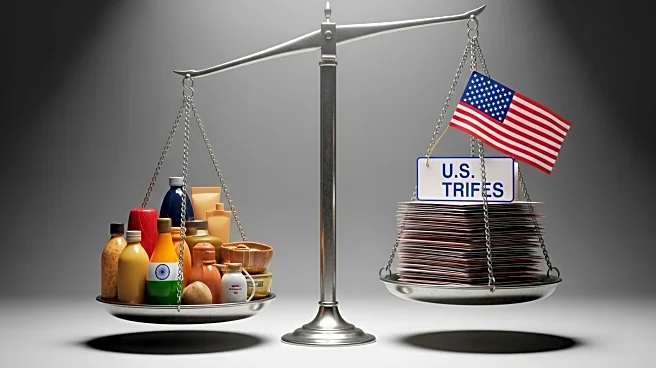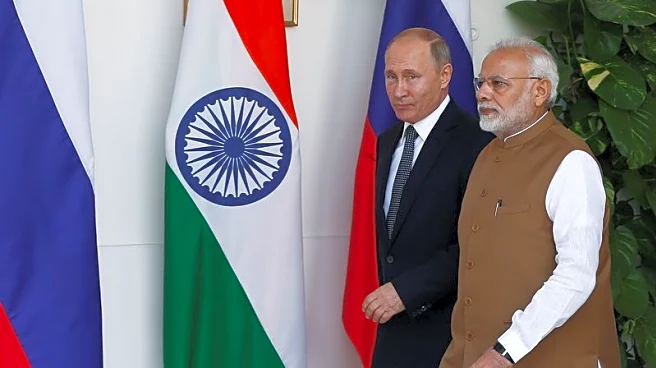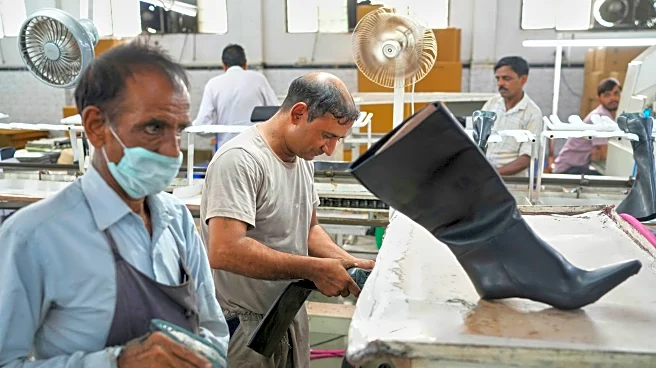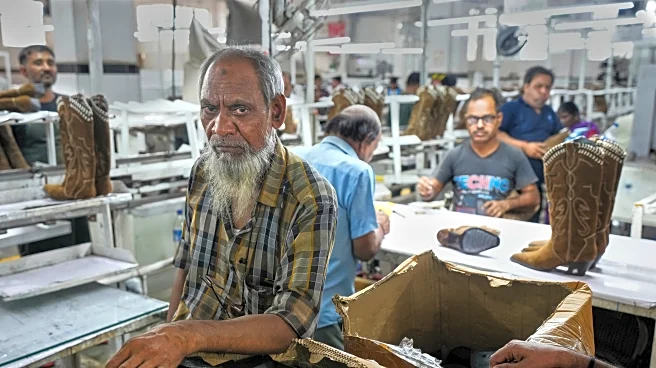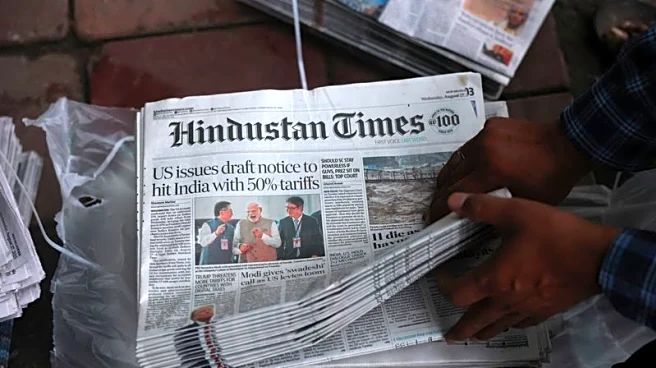What's Happening?
President Trump has implemented a 50% tariff on imports from India, marking one of the highest tariffs imposed by the United States. This decision is part of ongoing trade negotiations and reflects the administration's stance on protecting domestic industries from foreign competition. The tariff is expected to impact a wide range of goods imported from India, potentially leading to increased costs for U.S. consumers and businesses relying on these imports.
Why It's Important?
The imposition of such a high tariff on Indian imports could have significant implications for U.S.-India trade relations. It may lead to retaliatory measures from India, affecting American exports to the country. Additionally, U.S. businesses that depend on Indian goods may face increased costs, potentially leading to higher prices for consumers. This move could also influence global trade dynamics, as other countries observe the U.S.'s approach to trade protectionism.
What's Next?
The next steps may involve negotiations between the U.S. and India to address the trade imbalance and tariff concerns. Businesses affected by the tariffs might seek alternative suppliers or adjust their pricing strategies to mitigate the impact. Political leaders and trade organizations may also weigh in, advocating for policy changes or adjustments to the tariff rates.
